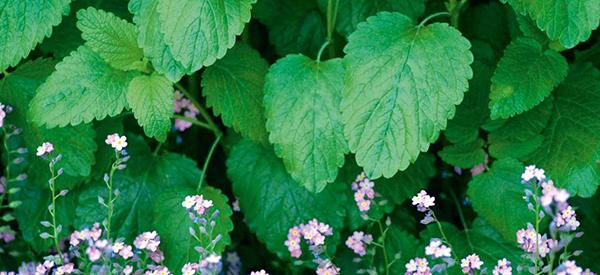
Lemon Balm
Lemon Balm (Melissa officinalis), also known as a honey balm or bee balm is a vigorous aromatic plant from the mint family. It is important to note, actual bee balm, (Monarda spp), is a different plant. Although both are of the mint family, Monardas are native to North America while Melissa officinalis or Lemon Balm originated in central and southern Europe, the Mediterranean, Iran, and central Asia. It has since spread or naturalized throughout the world. Lemon Balm’s use goes back over 2000 years. It has been used in medicine, food, skincare, and perfumery. It is especially important for pollinating insects including many kinds of bees and other beneficials in the garden.
The History of Lemon Balm
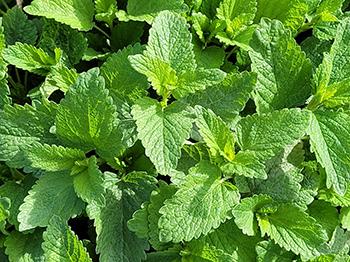 Lemon balm’s medicinal usage is mentioned as far back as 300 BC in Historia Plantarum, written by Greek native, Theophrastus, a successor of Aristotle. By the 7th century, it was commonly domesticated throughout Europe, after it was formally introduced to Spain. During the Middle Ages, lemon balm is noted by herbalists, philosophers, and scientists. It was thought to be restorative and promote vitality while also helping to improve mood.
Lemon balm’s medicinal usage is mentioned as far back as 300 BC in Historia Plantarum, written by Greek native, Theophrastus, a successor of Aristotle. By the 7th century, it was commonly domesticated throughout Europe, after it was formally introduced to Spain. During the Middle Ages, lemon balm is noted by herbalists, philosophers, and scientists. It was thought to be restorative and promote vitality while also helping to improve mood.
The list of medicinal usage and properties of lemon balm is extensive. Melissa officinalis is reported to possess sedative, antistress, antianxiety, and mood-enhancing abilities. It was also found to ease digestion, nausea, sleep disorders, depression, and headaches, among many others. The use of this herb as complementary and herbal medicine continues to the present day.
Where Lemon Balm is Found
Lemon balm originated in central and southern Europe, the Mediterranean basin, Iran, and Asia. It has since been naturalized throughout the world and can be found throughout North America. It is also commonly grown in Australia and New Zealand. It is grown commercially for its extracts, aromatic oil, for flavoring, and medicine. It is also excellent for growing to feed honeybees and continues to be grown extensively in the home garden and herb garden.
In many climates, lemon balm has escaped cultivation and can be found in hedgerows, abandoned homesites, vacant lots, and in urban and disturbed areas. It prefers full sun to partial shade in moist, fertile conditions.
Related: The Complete Map of Edible Plants: Find Out What You Have in Your Area! (Video)
How to Identify Lemon Balm

- Shape: Bushy, lush, upright growing habit which retains a round shrub-like shape. It reaches 39 inches (100 cm) in height.
- Leaves: Leaves are heart-shaped with uniform scalloped margins. They are 1 to 3 inches (2 to 8 cm) long. The bright green leaves are soft, finely hairy, with a rough veined surface. They are sweetly fragrant with citrus or mild lemon scents.

- Flower: Small white to soft pink flowers emerge at the leaf axils in summer. They are tubular, and ¼ to ½ inch (8 to 13 mm) long.
- Stem: Stems are smooth to finely hairy, bright green, and 4 angled with a single or furrow on two sides.
- Fruit & Seeds: Each flower bears 4 small nutlets. In temperate regions, lemon balm may self-seed easily.
Click Here to Learn More About How to Correctly Identify Over 400 Wild Plants (Video)
How to Grow Lemon Balm
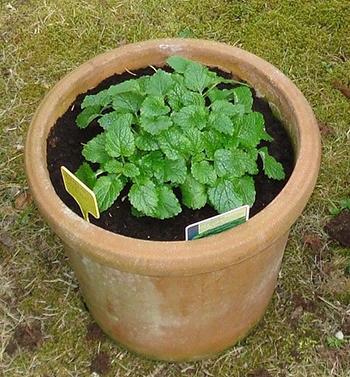 Lemon balm is reputed to be one of the easiest herbs to grow. It is a hardy herbaceous perennial which survives in zones 3 to 7, living about 5 to 10 years. Its vigorous growth, bright green leaves, and attractive form make it an excellent addition to the herb or ornamental garden.
Lemon balm is reputed to be one of the easiest herbs to grow. It is a hardy herbaceous perennial which survives in zones 3 to 7, living about 5 to 10 years. Its vigorous growth, bright green leaves, and attractive form make it an excellent addition to the herb or ornamental garden.
This herb thrives in full sun in well-draining soils with neutral to slightly alkaline pH.
Melissa officinalis is also easy to propagate. It grows well from cuttings. Additionally, plants can be divided. Moreover, as the plant spreads, the outward growing new stems can easily be trimmed with roots attached to grow new plants.
Flowering plants also readily produce volunteers from seed. Simply dig these up and replant, or re-pot to give to friends or put in other areas of the garden.
How to Harvest And Process
Lemon balm is also extremely easy to harvest. It does not seem to be bothered by many pests but do take a look for caterpillars and aphids when harvesting. The leaves are harvested, in general, before the plant begins to make flowers in midsummer. Many garden plants are best to harvest first thing in the morning. However, the best time of day to harvest it is during the heat of the day. This is also true of many Mediterranean herbs.

These plants tend to have the highest concentrations of volatile oils in their leaves during the driest, hottest parts of the day. This in turn results in more flavorful herbs to use fresh, dry, and to make other products such as oil or honey infusions or alcohol tinctures.
To harvest, simply cut or pinch stems 4 to 10 inches (10 to 25 cm) long. The leaves are perfect for using fresh or for drying.
There are several ways to dry the leaves
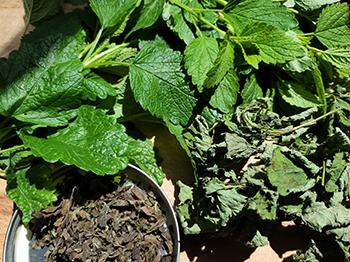 One method which is most wonderful for tea is to dry leaves in a mostly cool oven. This results in a slightly toasted flavor. These oven-dried leaves are excellent for using alone in tea or for blending with other herbal tea ingredients. In particular, lemon balm tea blends wonderfully with chamomile, lavender, spearmint, and peppermint.
One method which is most wonderful for tea is to dry leaves in a mostly cool oven. This results in a slightly toasted flavor. These oven-dried leaves are excellent for using alone in tea or for blending with other herbal tea ingredients. In particular, lemon balm tea blends wonderfully with chamomile, lavender, spearmint, and peppermint.
For those who live in humid conditions, oven drying is a wonderful option. Another option is to use a dehydrator that has an herb drying setting.
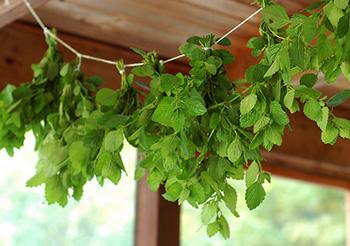
Another method of drying lemon balm is to gather in bunches and hang to dry, similar to drying flowers. After a couple of weeks, pluck the leaves from the stems and place them in an airtight container. This method is best done in an area where the leaves are protected from light.
I have found an even better method for retaining the bright green color of the leaves along with its many aromatic virtues. In a fabric or paper bag, I place bunches of harvested lemon balm stems. I hang the bag in a garden shed where there is excellent air circulation. Every few days, I shake the leaves up to maximize even drying of the leaves.
There are several excellent reasons to dry leaves. The first, of course, is to extend the shelf life of this lovely aromatic plant. Second, you will love having dried lemon balm on hand for making many lemon balm-inspired recipes. Some recipes may call for fresh leaves. But when it comes to making long-lasting, shelf-stable infusions and tinctures, starting with perfectly dried lemon balm is always best.
What Lemon Balm Is Good For And The Natural Remedies Made From It
An incredibly useful herb, once harvested, can be used fresh or dried in the following ways.
Culinary uses
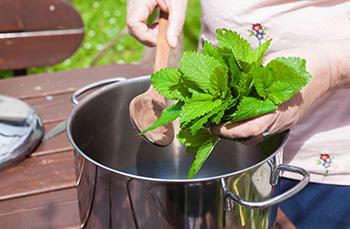
It may be surprising, but this plant has many culinary uses. There are even recipes for making lemon balm pesto! The fresh, lemony flavor lends itself wonderfully to adding sweet, citrusy tastes to marinades and salad dressings. It also makes a wonderful honey infusion which is delicious drizzled on ice cream, fruit, or any other sweet summer treats. Along with other summer herbs and garden flavors, lemon balm is wonderful in cold infusions for flavoring both adult and kid-friendly beverages.
Additionally, lemon balm is a key ingredient in many alcoholic beverages including Carmelite water. Keep in mind, it loses flavor when cooked. Additionally, it does have calming, sedative-like potential so may not be a wonderful breakfast food. In fact, it is probably best enjoyed at the end of the evening meal.
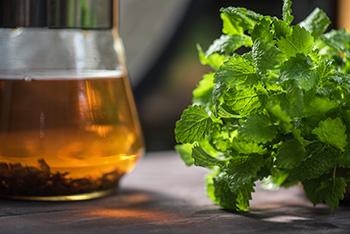
Teas and tea blends
As mentioned above, lemon balm is probably most noted as an ingredient in calming teas.
It may be worth experimenting with different herbal tea ingredients to find your own favorite way of enjoying lemon balm tea.
A Before-Bed Recipe to Sleep Like a Baby Again (Video)
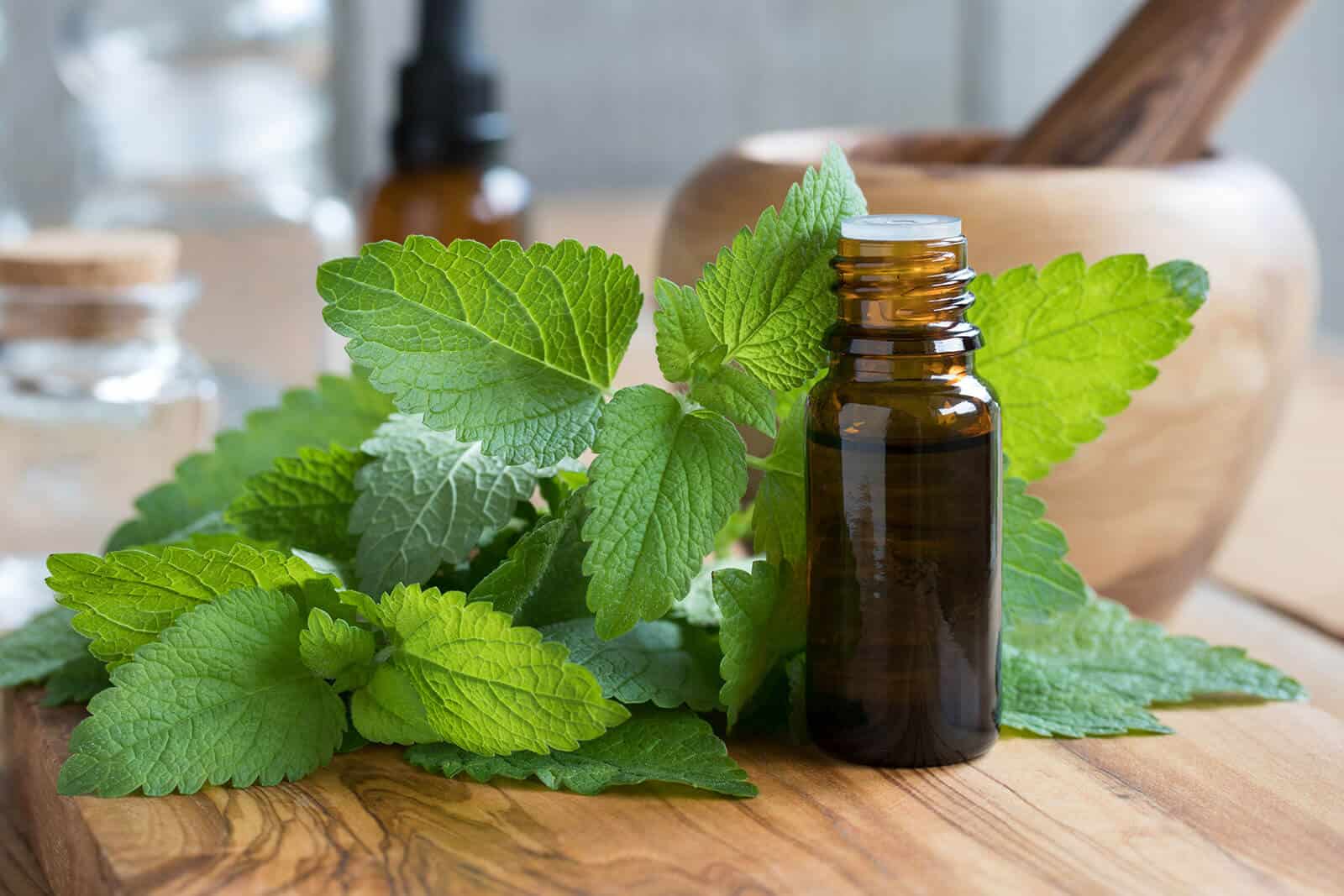
Skin Care
Lemon balm has been used for centuries to reduce wrinkles and fine lines and to soften skin. Importantly, it is a useful insect repellent as it contains citronella oils.
It also has some relieving potential for insect bites as well as some types of infections.
Herbal Medicine
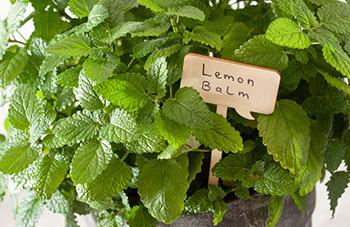
The list of medicinal uses for lemon balm is extensive. Interestingly, it scores a 5 out of 5 for medicinal use on the Plants for a Future website. In both internal and external uses, lemon balm has shown antibacterial, antispasmodic, antiviral, anti-gas, digestive, aids menstruation, reduces fever, sedative, and nerve tonic.
Aromatherapy
The delicious aroma of Melissa officinalis essential oil contains citral, neral, and citronella. These powerful attributes act to calm the central nervous system making lemon balm a wonderful relaxing aromatherapy option.
Lemon balm lives up to the hype. In clinical trials, scientific studies, and comparative reviews, Melissa officinalis has proven itself to provide the following benefits.
- Antimicrobial Activity
- Antispasmodic and Anti-inflammatory Activity
- Benefits for Sleep Dysfunction and Insomnia
- Antioxidant Activity and Neuroprotective Properties
- Lemon balm extracts show excellent ability to scavenge both synthetic and natural free radicals.
Related: 1 Cup Before Bed Shrinks Belly Fat All Night (Video)
What Parts of The Lemon Balm Plant Are Used In Remedies?
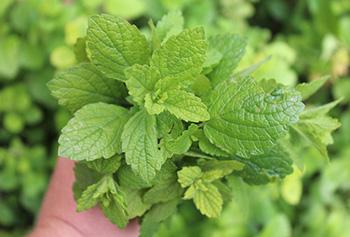
Leaves are primarily the plant parts used in remedies. The stems and flowers may also be used. For home use, leaves harvested before the plant is in flower is best.
This way, when the plant flowers, the nectar can be used to feed beneficial insects.
In tropical and subtropical regions, lemon balm may not flower, although it may have a dormancy period during times of high heat. In this case, leaves can be harvested at any time.
Related: The Unnoticed Symptom That May Point to an Internal Inflammation (Video)
A DIY Recipe
To choose just one recipe for using lemon balm is the biggest challenge. As described above, there are many methods to using Melissa officinalis as food, medicine, skincare, and aromatherapy. Also discussed are the many potential methods of drying lemon balm.
For simplicities sake, our recipe is using the fresh or dried lemon balm to make lemon balm-infused oil. This oil can then be used to make a multitude of lemon balm products, which we will share below.
Method #1: Fresh lemon balm infused oil
- Gather fresh lemon balm leaves as described above.
- Chose an oil to be infused that will maintain its healthful benefits with heat such as olive oil, avocado oil, sesame oil, coconut oil, or safflower oil.
- Place leaves and oil in a jar and place jar in a pot half-filled with water, (not enough to spill into the jar). On a low heat, setting allow the water to gently simmer for 2 to 4 hours.
- Remove from heat and strain oil from leaves, gently pressing excess oil out of leaves. Discard leaves.
- Put oil in an airtight container in the cupboard or refrigerator. Use fresh lemon balm-infused oil in 2 to 3 weeks’ time.
Method #2: Dried lemon balm infused oil.
- Gather and dry lemon balm leaves using a method of your choice, as described above.
- In a clean jar, chop dried leaves into small pieces.

- Cover leaves with a high-quality oil of your choice. As this is a cold, slow process, you may choose a high-grade cold-pressed oil such as extra-virgin olive oil, sunflower oil, hemp oil, sesame oil, or chia oil.

- Allow lemon balm oil to infuse at room temperature or colder for 4 to 6 weeks. The oil I am making is infusing in the fridge, as I’m using organic cold-pressed sunflower oil that is stable and liquid in the refrigerator.

- At the desired time, strain the oil from leaves, gently pressing excess oil out of leaves. Discard leaves.

- Put oil in an airtight container in the cupboard or refrigerator. Use dried lemon balm-infused oil within 12 to 24 months.
You can get your own Lemon Balm Tincture here..
Potential Uses
Lemon balm infused oil can be used in the following ways:
- As a lovely, citrus-flavored oil to use in salad dressings or marinades.
- Add to Epsom salts for use in a relaxing bath. Epsom salts are relaxing as they contain magnesium. Epsom salt helps to disperse lemon balm-infused oil rather than having oil float on the bath water’s surface.
- Use lemon balm-infused oil as a relaxing therapeutic ingredient in a candle, salve, and balm making.
- Lemon balm-infused oil can be used directly on the skin to treat insect bites and small infections.
Dosage
The dosage of lemon balm is variable based on the issues it is intended to treat. Lemon balm is available in tea, powder, capsule, and essential oil formats. Some research shows 300 to 1200 mg for the treatment of anxiety or pain problems. A teaspoon of tea leaves per cup of boiled water is a recommended dosage for a relaxing, sleep-inducing evening tea. Essential oil is generally 1 to 2 drops to an affected area such as a toothache or in a carrier oil or essential oil diffuser.
How To Preserve This Plant
As described above, lemon balm preserves well as a dried herb. It may also be preserved in an infusion of oil, also described above. Other methods of preserving lemon balm would be by making an extraction in alcohol, such as a tincture. It also makes a wonderful ingredient in a honey infusion. The honey also helps to preserve this useful, delicious herb.
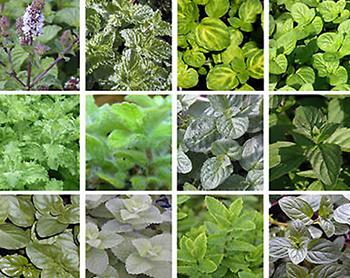
What Plants Resemble Lemon Balm?
As lemon balm is part of the mint family of plants, there are a few plant similarities within this family. Most notably, plants in the mint family generally have square stems. Most have aromatic foliage.
That being said, if it has a lemon or citrus scent, it is most likely lemon balm.
Warnings And Cautions
Lemon balm is considered safe for topical and internal use. There are reports of side effects which include skin irritation and allergic reaction. People have also experienced nausea, vomiting, headache, and dizziness. It may be recommended to not exceed 2000 mg in a day. There is also a benefit to interrupting using lemon balm, generally only using it 5 out of 7 days, and/or 3 out of 4 weeks. This would be specific to each person and how they are using lemon balm.
Also of importance, people who are pregnant or breastfeeding should talk to their doctor before using lemon balm products. Additionally, lemon balm may be contraindicated for people taking certain medications. These may include but are not limited to medications for glaucoma, thyroid, and sedation.
As with any new ingredient, do a small skin test by placing a small amount of the leaf or oil on the skin and wait 24 hours. Any reaction such as itchiness or hives may be an indication of sensitivity. It only makes sense to practice some caution with topical use for people who suffer from seasonal allergies.
Always check with your healthcare provider before starting new herbal remedies.
You may also like:
How To Make A Pain Healing Mint Salve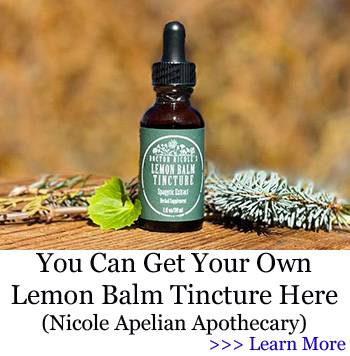
The 10 Medicinal Seeds You Should Plant for a Complete Backyard Pharmacy (Video)
DIY Headache Recipe For Instant Pain Relief

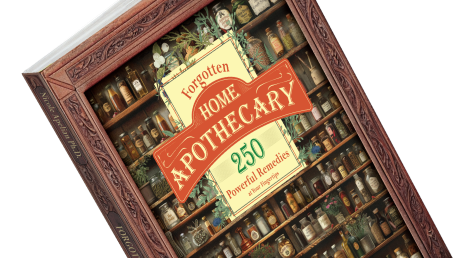






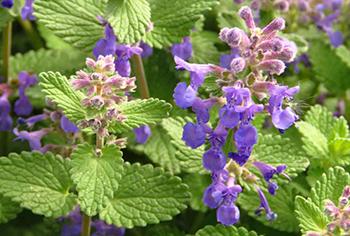
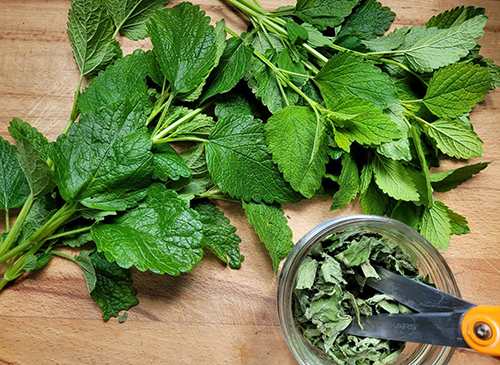
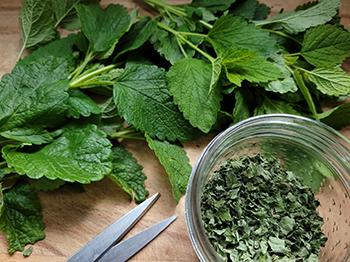
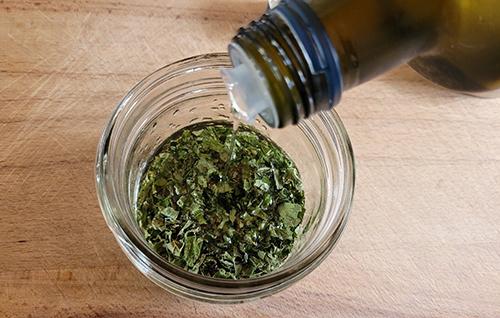
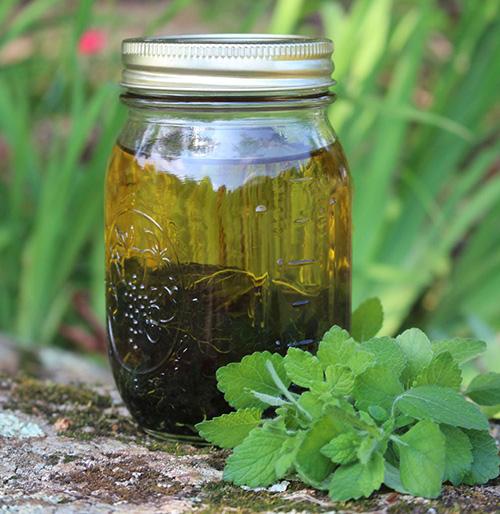
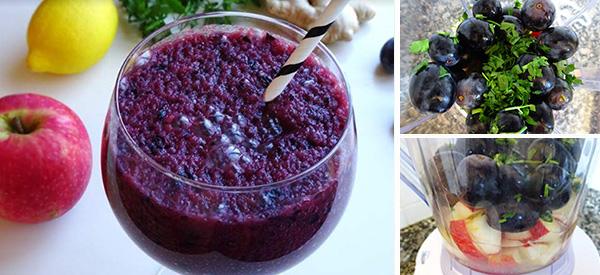
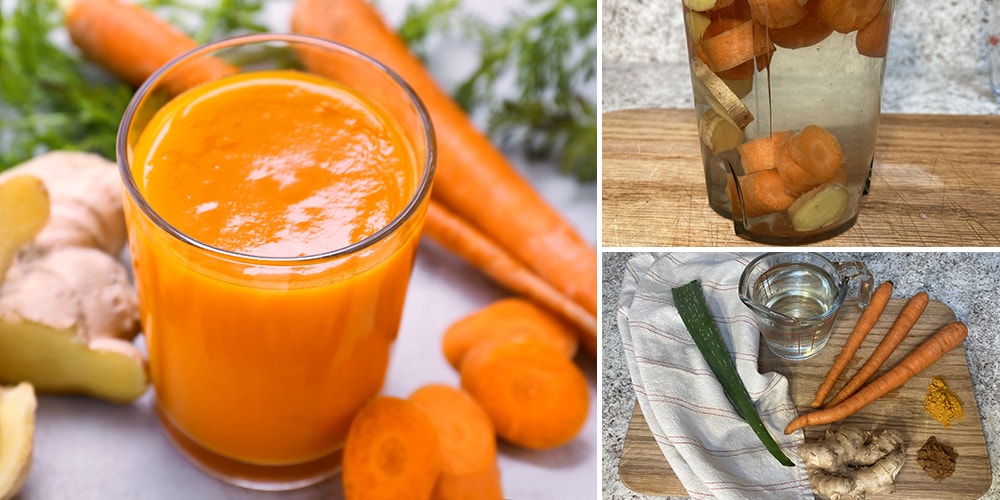
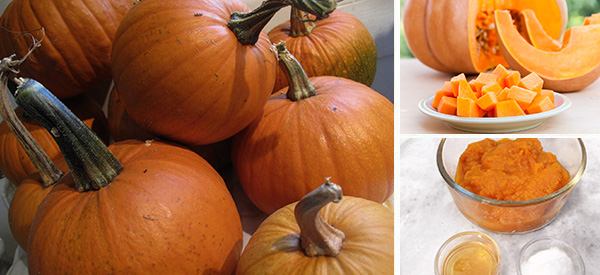
Can you post poultice for muscle inflammation please
Has anyone used this in pesto? Thinking of making regular basil pesto, but substituting some lemon balm for some of the pesto.
I always add lemon balm to my pesto! It’s really good!
I have lemon balm in the garden and don’t know what’s for dinner tomorrow night.😉 It sounds yummy! I’ll get back to you.
Jenny, the lemon balm in the pesto was yummy! I used about half and half but I could have used more because I was using Genovese and Tulsi what has a bit stronger flavor. I made enough for later.👍
Lemon Balm has always been by my bedside ever since I started struggling with anxiety due to the pandemic. I’ve tried the tea and it’s a blessing, but I don’t really see how I can use the infused oil as I’d rather have something to drink or take internally.
Hey Gabbie, there’s a great Lemon Balm tincture recipe in The Lost Book of Herbal Remedies, I dunno if you have it. tHE tincture is great if you want something to ingest, it has been of great help to me when it comes to digestion
I am excited to make an infused oil. It will go nicely on salads and give a summer flavor. I am allergic to lemons so this could be an amazing substitution! I am even thinking of lemon balm infused vodka. Anyone try that?
I made the Lemon Balm Extract/ tincture in the Lost Book of Herbal Remedies. Does anyone know what the dosage should be? We are taking it for high blood sugar and also for heart issues. Thanks!
Greetings please how can I get the seeds of this plant.